
Unveiling the Mystique of Rio dos Mouros
Explore the captivating ruins of Rio dos Mouros, a historical landmark in Condeixa-a-Velha, and immerse yourself in Portugal's rich heritage and breathtaking landscapes.
Nestled in the heart of Condeixa-a-Velha, Rio dos Mouros is a captivating historical landmark that transports visitors to a bygone era, showcasing the rich heritage and stunning landscapes of Portugal. A must-visit for every traveler seeking an authentic cultural experience.
A brief summary to Rio dos Mouros
- Condeixa-a-Velha, PT
Local tips
- Visit early in the morning or late afternoon to avoid crowds and enjoy the best lighting for photography.
- Wear comfortable shoes, as the terrain can be uneven and requires some walking.
- Bring water and snacks, as there are limited facilities nearby.
- Take time to explore the surrounding area for additional scenic viewpoints.
Getting There
-
Bus
From Coimbra, head to the main bus station, 'Rodoviária de Coimbra', located at Av. Fernão de Magalhães, 200. You can take bus number 32 or 33 towards Condeixa-a-Velha. The journey takes approximately 30 minutes. Make sure to check the bus schedule in advance as the frequency may vary. Once you arrive at the Condeixa-a-Velha stop, exit the bus and head towards the village center. Follow the signs to 'Rio dos Mouros'. It's about a 15-minute walk from the bus stop.
-
Train and Bus
Take a train from Coimbra-B train station towards Condeixa-a-Velha. The train journey takes about 20 minutes. Upon arrival at the Condeixa-a-Velha train station, you will need to switch to a local bus or walk towards the village center. Look for the signs directing you to the bus stop for local services or head directly towards 'Rio dos Mouros', which is a 20-minute walk from the station.
-
Walking
If you are feeling adventurous and want to explore, you can walk from Coimbra to Rio dos Mouros. Start from the city center, walk towards the east, following the signs for Condeixa. The walk is approximately 10 km and will take around 2 hours. Be sure to wear comfortable shoes and bring water. As you walk, you can enjoy the beautiful scenery of the countryside.
Discover more about Rio dos Mouros
Iconic landmarks you can’t miss
Fonte das lágrimas
12.4 km
Discover the serene beauty and tragic romance of Fonte das Lágrimas, a historical landmark in Coimbra, Portugal, surrounded by lush gardens and rich tales.

Pinhal da Marrocos
12.5 km
Explore the beauty of nature at Pinhal da Marrocos, Coimbra's serene park, perfect for relaxation and family outings amidst lush greenery.

Ponte Rainha Santa Isabel/Ponte Europa
12.5 km
Explore the enchanting Ponte Rainha Santa Isabel in Coimbra, a stunning bridge offering picturesque views and a rich historical backdrop.

Mondego's Verde Park
13.3 km
Experience the tranquility and natural beauty of Mondego's Verde Park in Coimbra, a perfect escape for tourists seeking relaxation and leisure.

Urso
13.3 km
Explore Urso in Coimbra, Portugal - a stunning sculpture blending rich cultural heritage and modern artistry, a must-see for every tourist.

Academic Prison
13.8 km
Discover the Academic Prison of Coimbra, where history and education intertwine in a captivating museum experience.
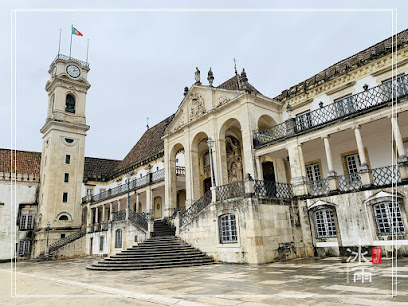
Joanina Library
13.8 km
Discover the architectural beauty and literary treasures of the Joanina Library in Coimbra, Portugal, a must-visit for culture enthusiasts and history buffs.
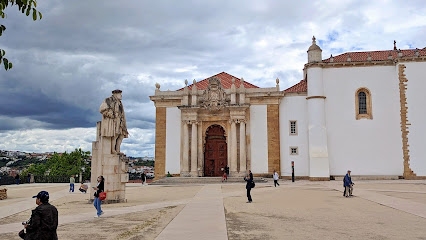
Chapel of São Miguel
13.8 km
Discover the tranquil beauty and rich history of the Chapel of São Miguel in Coimbra, Portugal, a must-visit cultural landmark.

Statue of King D. João III
13.8 km
Discover the majestic Statue of King D. João III in Victor Larco Herrera, a stunning tribute to Portugal's rich heritage and artistry.

Palace of Schools
13.8 km
Explore the Palace of Schools in Coimbra: a UNESCO Heritage site reflecting centuries of academic excellence and breathtaking architecture.

Praça do Comércio
13.9 km
Explore the historical charm of Praça do Comércio, Coimbra's vibrant square filled with stunning architecture and local culture.

Tower of University of Coimbra
13.9 km
Explore the Tower of the University of Coimbra: A historical landmark offering breathtaking views and rich academic heritage in the heart of Portugal.

University of Coimbra
13.9 km
Discover the rich history and stunning architecture of the University of Coimbra, one of the oldest universities in Europe, a UNESCO World Heritage site.

Porta e Torre de Almedina
13.9 km
Explore the Porta e Torre de Almedina, a magnificent historical monument that reveals the medieval charm and rich heritage of Coimbra, Portugal.

Barbican Gate
13.9 km
Explore the majestic Barbican Gate in Coimbra, a historical landmark that embodies the rich heritage and vibrant culture of Portugal.

Unmissable attractions to see
Anfiteatro Romano de Conimbriga
0.7 km
Explore the ancient marvel of Anfiteatro Romano de Conimbriga, a captivating historical landmark rich in Roman heritage and architectural splendor.

Forum de Conimbriga
0.8 km
Explore the stunning ruins of Forum de Conimbriga, a remarkable Roman historical landmark in Condeixa-a-Velha, Portugal, steeped in ancient history and culture.

Termas Romanas de Conimbriga
0.9 km
Explore the timeless beauty of Termas Romanas de Conimbriga, a historical landmark revealing the grandeur of ancient Roman baths in Portugal.

Trilho caminhada Rio de Mouros
1.1 km
Discover the stunning landscapes and serene trails of Trilho caminhada Rio de Mouros in Condeixa-a-Velha, a perfect getaway for hiking enthusiasts.

Passadiços de Rio dos Mouros
1.1 km
Explore the tranquil beauty of Passadiços de Rio dos Mouros, a serene hiking area in Condeixa-a-Velha, perfect for nature lovers and outdoor enthusiasts.

Conimbriga Ruins
1.1 km
Discover the captivating history of the Conimbriga Ruins, a remarkable archaeological site showcasing the grandeur of ancient Roman civilization in Portugal.

Museu Monográfico de Conimbriga
1.1 km
Discover the rich Roman heritage at Museu Monográfico de Conimbriga, home to exquisite mosaics and ancient artifacts that tell a timeless story.

Cascata do Rio de Mouros
1.5 km
Experience the breathtaking beauty of Cascata do Rio de Mouros, a serene waterfall in the heart of Condeixa-a-Velha, perfect for nature lovers and adventurers.

PO.RO.S - Portugal Roman Museum in Sicó
1.9 km
Explore the rich heritage of the Roman Empire at the Portugal Roman Museum in Sicó, a cultural treasure in Condeixa-a-Nova, Portugal.
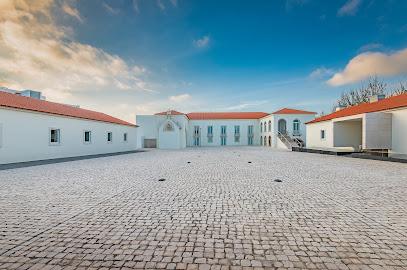
Senhora do Círculo
4.2 km
Discover the serene beauty and cultural richness of Senhora do Círculo, a stunning place of worship in the heart of Furadouro, Portugal.

Buracas do Casmilo
4.6 km
Explore the stunning landscapes and unique geological formations of Buracas do Casmilo, a must-visit hiking area in Condeixa-a-Nova, Portugal.

Moinho do Outeiro
4.7 km
Explore Moinho do Outeiro, a historic windmill in Portugal that beautifully showcases traditional milling practices amidst breathtaking landscapes.

Dolina do Casmilo
5.1 km
Escape to the serene beauty of Dolina do Casmilo, a scenic spot in Condeixa-a-Nova, perfect for nature lovers and photographers alike.

Lapiás do Casmilo
5.2 km
Experience the natural wonder of Lapiás do Casmilo, a stunning limestone formation perfect for hiking and photography in Condeixa-a-Nova, Portugal.

Buracas do Casmilo / Vale das Buracas
5.8 km
Explore the stunning Buracas do Casmilo, a hiker's paradise in Portugal with breathtaking views and diverse trails for all adventure seekers.

Essential places to dine
Restaurante Osteria 44
12.6 km
Discover authentic Italian cuisine at Restaurante Osteria 44 in Coimbra—where every meal is a celebration of flavors!

Arcadas
12.6 km
Experience authentic Portuguese cuisine at Arcadas, where tradition meets taste in the heart of Coimbra.

Cordel Maneirista
13.0 km
Discover the taste of Portugal at Cordel Maneirista in Coimbra - where tradition meets modern culinary excellence.

Restaurante Dona Taska
13.2 km
Discover the flavors of Portugal at Restaurante Dona Taska - where tradition meets modern dining in Coimbra's heart.
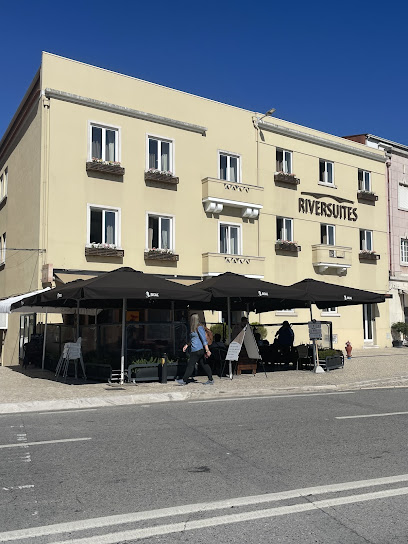
La Vara - Handmade Burgers & Portuguese Wines
13.2 km
Experience gourmet handmade burgers paired with exquisite Portuguese wines at La Vara in Coimbra.

Itália
13.4 km
Discover the taste of Italy in Coimbra with breathtaking views and exquisite dishes at Itália Restaurant.

Restaurante O Açude
13.4 km
Savor authentic Portuguese cuisine at Restaurante O Açude in Coimbra – a must-visit culinary destination for every traveler.

Cozinha Consciente
13.6 km
Discover Cozinha Consciente in Coimbra: Where local flavors meet sustainability in a cozy dining atmosphere.

Bixos Coimbra
13.6 km
Experience authentic Italian cuisine and vibrant cocktails at Bixos Coimbra - a culinary hotspot in Portugal's historic city.

Restaurante PASSAPORTE Coimbra
13.7 km
Experience Coimbra's vibrant culinary scene at Restaurante PASSAPORTE – where local flavors meet lively nightlife.

Restaurante Maria Rio
13.7 km
Experience the essence of Portuguese cuisine at Restaurante Maria Rio in Coimbra – where tradition meets modern culinary artistry.
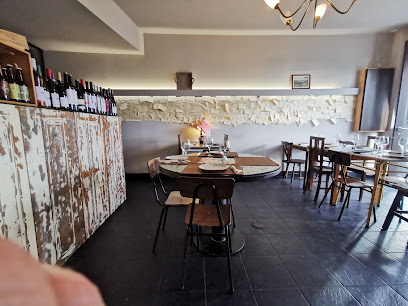
Restaurante Tasquinha da Saudade
13.7 km
Experience authentic Portuguese cuisine at Restaurante Tasquinha da Saudade in Coimbra – where tradition meets flavor in every bite.

Restaurante Zé Manel dos Ossos
13.7 km
Experience the rich flavors of Portugal at Restaurante Zé Manel dos Ossos in Coimbra – a culinary delight for every traveler.

Restaurante Napolitano
13.7 km
Discover exquisite seafood delights at Restaurante Napolitano in Coimbra - where fresh flavors meet warm hospitality.

Restaurante Il Tartufo
13.7 km
Experience authentic Italian cuisine at Restaurante Il Tartufo in Coimbra – where every meal is a celebration of flavor and tradition.

Markets, malls and hidden boutiques
houseandgifts
13.4 km
Explore House and Gifts in CoimbraShopping for unique souvenirs and local treasures that celebrate Coimbra's rich culture and craftsmanship.

Centro Comercial CoimbraShopping
13.4 km
Experience the vibrant shopping scene at Centro Comercial CoimbraShopping, where retail therapy meets delightful dining and entertainment in Coimbra.

Forum Coimbra
13.6 km
Discover the vibrant shopping experience at Forum Coimbra, where a variety of stores, dining options, and entertainment await in the heart of the city.

Primark
13.6 km
Explore Primark in Coimbra for trendy, affordable fashion and stylish home essentials tailored for every budget and style.

Continente Fórum Coimbra
13.6 km
Experience the local flavor at Continente Fórum Coimbra, your go-to supermarket for fresh produce, local delicacies, and unique finds.

Colecionismo Velharias
13.6 km
Explore the nostalgic treasures of Colecionismo Velharias, Coimbra's premier collectibles store with an eclectic mix of vintage items and antiques.

Moveis Vasco - Nelson & Duarte, Lda.
13.7 km
Explore Moveis Vasco in Coimbra for exquisite furniture and authentic Portuguese craftsmanship, perfect for enhancing your home décor.

Comur - Coimbra
13.7 km
Discover the flavors of Portugal at Comur - Coimbra, where tradition meets taste in artisanal canned seafood delights.

A de Amor - Artesanato Portugués
13.7 km
Explore the essence of Portuguese culture at A de Amor, where handcrafted treasures and unique souvenirs await every visitor.

In Vintage Regional
13.7 km
Explore In Vintage Regional, a charming fashion accessories store in Coimbra, where vintage meets modern in a treasure trove of unique finds.

Coimbra Na Bagagem
13.8 km
Discover unique gifts and local crafts at Coimbra Na Bagagem – a charming shop that embodies the spirit of Coimbra, Portugal.

in Vintage
13.8 km
Explore the charm of in Vintage, Coimbra's premier fashion accessories store, where timeless elegance meets modern style.

In Vintage Kiosk
13.9 km
Discover unique vintage-inspired accessories at In Vintage Kiosk, a charming store in the heart of Coimbra, perfect for finding memorable souvenirs.

Portugalidades
13.9 km
Explore the charm of Coimbra at Portugalidades, your go-to gift shop for authentic Portuguese crafts and souvenirs.

Sortido Lusitano
14.0 km
Discover the authentic taste of Portugal at Sortido Lusitano in Coimbra, a delightful store filled with local delicacies and culinary treasures.

Essential bars & hidden hideouts
Suricata Bar - Praia do Rebolim
11.7 km
Experience the coastal charm of Coimbra at Suricata Bar, where refreshing drinks and stunning views create the perfect beach getaway.

Coimbra Ó Porto
12.4 km
Experience the best of Coimbra at Coimbra Ó Porto, where exquisite wines and delicious tapas create unforgettable moments in a charming setting.

Claustro Bar
12.9 km
Discover Claustro Bar in Santa Clara: a lively bar with a unique ambiance, eclectic drinks, and a perfect spot for mingling with locals and travelers alike.

Galeria Santa Clara
13.0 km
Experience the vibrant atmosphere of Galeria Santa Clara, a charming bar and restaurant in Coimbra perfect for unwinding with friends.

Ghost Bar
13.6 km
Discover Penela's nightlife at Ghost Bar, a lively spot for cocktails and good company in the heart of town.
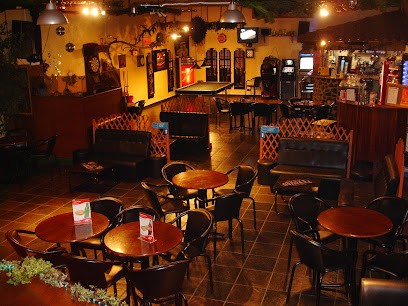
Olivença bar
13.6 km
Discover the lively ambiance of Olivença Bar in Coimbra, where local culture meets vibrant social scenes and refreshing drinks.

Passaporte Coimbra
13.7 km
Discover the vibrant culinary scene at Passaporte Coimbra, a blend of restaurant, bar, and event space in the heart of the historic city.

Bar Guitarras
13.7 km
Discover the vibrant nightlife of Coimbra at Bar Guitarras, where music and good vibes meet exceptional drinks in a warm atmosphere.

Bar 5° andar
13.8 km
Experience the enchanting views of Coimbra while sipping on exquisite wines and cocktails at Bar 5° Andar.

Coola Boola
13.9 km
Discover the vibrant essence of Coimbra at Coola Boola, where craft beer, delightful cuisine, and a lively atmosphere await every visitor.

Quebra Bar
13.9 km
Experience the vibrant nightlife at Quebra Bar in Coimbra, where delightful drinks and a lively atmosphere await you.
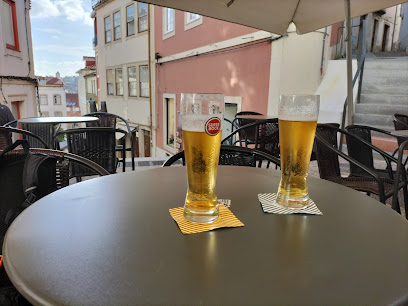
Cabido Bar, Lda.
13.9 km
Discover the essence of Coimbra nightlife at Cabido Bar, Lda., where great drinks and friendly vibes await you.

O Moelas
13.9 km
Explore the vibrant nightlife of Coimbra at O Moelas, where local culture and delicious drinks come together in a lively atmosphere.

RS Coffee Bar
14.0 km
Experience the warmth and charm of RS Coffee Bar in Coimbra, where delicious coffee and light bites await visitors in a welcoming atmosphere.

Piano Negro
14.0 km
Discover the vibrant nightlife of Coimbra at Piano Negro, a lively bar offering exquisite drinks and a welcoming atmosphere that captivates every visitor.




